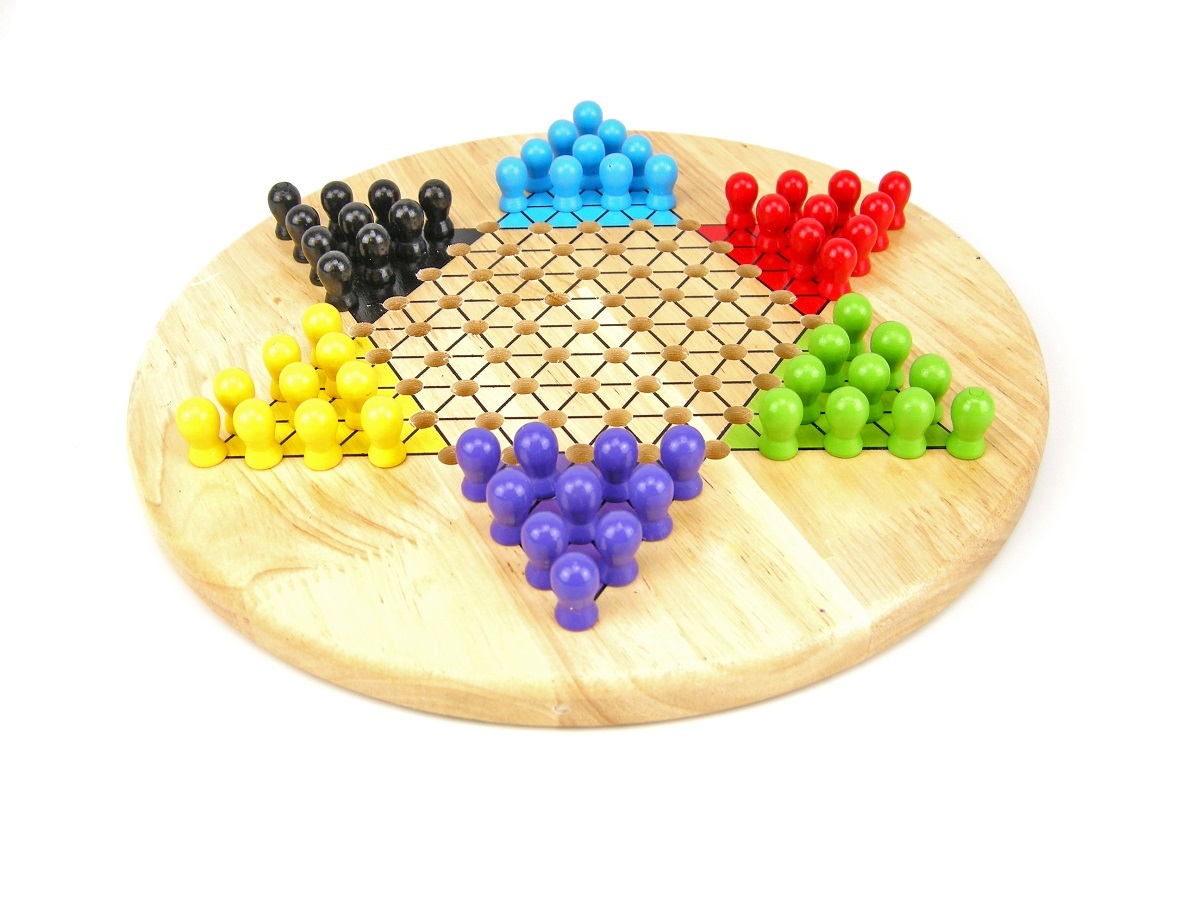Tiao-qi ('Jump chess') Sternhalma, commonly known as Chinese checkers (US and Canadian spelling) or Chinese chequers (UK spelling), is a strategy board game of German origin which can be played by two, three, four, or six people, playing individually or with partners. The game is a modern and simplified variation of the game Halma. How to Play Chinese Checkers: How Do the Pieces Move in Chinese Checkers. How to Play Chinese Checkers.
The following are simple instructions for how to play Chinese Checkers.
A wooden Chinese Checkers playing board. This board is nice because it has colored triangles and looks nice in the living room. View Wooden Chinese Checkers Games
What you need in order to play Chinese Checkers
The number of players: Chinese Checkers allows for 2-6 players.
A Chinese Checkers playing board: A Chinese Checkers playing board consists of 121 round indented slots in a hex-star shape and 20-60 marbles depending on the number of players. The marbles are in sets of 10 and each set has its own identifying color or markings. Different manufacturers may use pegs instead of marbles but the gameplay remains the same.
How to set up the Chinese Checkers game board
Have players select their 10 same-colored marbles or play pieces. You will notice that the Chinese Checkers playing board has 6 triangles that make each point of the star. Each triangle corresponds to the colored marbles. Orient the playing board so that each player is sitting fairly close to their designated triangle. Each player will then fill all 10 slots within the triangle with their marbles. Once each player has all their marbles in place the game can begin. The youngest player begins.
Rules of Chinese Checkers and gameplay
Your goal is to be the first player to move all marbles to the exact opposite triangle. A game move consists of moving one marble at a time into one slot. This can be achieved in any direction. You cannot skip any slots unless a marble is already occupying a slot. In that case, your marble can jump any number of consecutive marbles that stand in the way. A player may hop in any direction and can hop over their own marbles as well [see the example picture]. Marbles that are jumped are not removed from the board.
Gameplay rotates in clockwise order. Once a player’s marble reaches the opposite triangle it can move anywhere within that triangle but never re-enter the main playing area. Also, players cannot leave their marbles at their beginning triangle as a strategy to block other players from entering.
How to win Chinese Checkers
The first player to fill all the holes in the opposite triangle wins.
Was Chinese Checkers invented in China?
Chinese Checkers was not invented in China. It was conceived in 1892 in Germany. It was a variation of an American game called Halma but with a six-pointed, hex star shaped playing area. Halma traditionally has a square shaped playing area.
Related

Chinese checkers is not a difficult or complicated game. However, there are a few tips and strategies you can use to improve your play and defeat your opponents.
Even though you are permitted to make as many jumps during a turn as is possilbe, sometimes it is to your advantage not to make all of the available jumps. This is especially true when you have the opportunity to block your opponent.
If you watch good chinese checkers players or computerized chinese checkers players, you wil notice that they almost always start the game by moving one of the two marbles located at the ends of the front row. This marble may be moved one space outward or, more commonly, inward toward the center of the board.

When advancing your marbles, move them as a group. Generally you will find that you will have more jumping opportunites and will advance faster this way. Always look to jump your last marble forward so it doesn’t get left behind.
The easiest and fastest way to learn to play chinese checkers well is to play practice games against a computer opponent. Computer players usually move their marbles efficiently and logically, by analyzing future moves. By playing against a computer foe you will learn from watching its moves, as well as be challenged to play your best. For practice, you can play for free here.
Some players use a defensive strategy to prevent victory by their opponent. They keep a marble in their home point to prevent their opponent from moving all their marbles into that point. Of course, the player using this strategy cannot win since they ultimately must move that marble across the board to score victory.
How To Play Chinese Checkers Printable
Generally speaking, this strategy is considered “unsportsmanlike”. In fact, some players modify the basic rules of chinese checkers to prevent use of this strategy. The simplest rule to prevent this strategy states that the player wins when all available spots are filled in the destination point. So even if the player keeps one marble in the home point, the opponent can win by occupying the remaining nine spots.